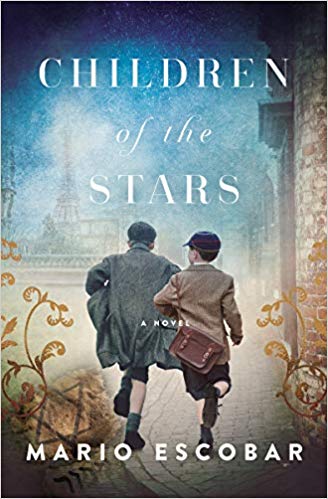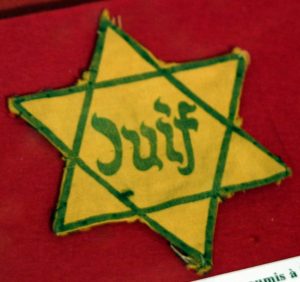 Children of the Stars by Mario Escobar
Children of the Stars by Mario Escobar Format: ebook
Source: supplied by publisher via NetGalley
Formats available: hardcover, paperback, ebook, audiobook
Genres: historical fiction, Holocaust, World War II
Pages: 368
Published by Thomas Nelson on February 25, 2020
Purchasing Info: Author's Website, Publisher's Website, Amazon, Barnes & Noble, Kobo, Bookshop.org
Goodreads
From international bestseller Mario Escobar comes a story of escape, sacrifice, and hope amid the perils of the second World War.
Jacob and Moses Stein live with their aunt in Paris until the great raid against foreign Jews is unleashed in August 1942. Their parents, well-known German playwrights, have been hiding in France, but before their aunt manages to send them south, the gendarmes stop the boys and take them to the Velodromo de Invierno, where more than 4,000 children, 5,000 women, and 3,000 men had to subsist without food or water. Jacob and Moses manage to flee, but the road will not be safe or easy. This novel by internationally bestselling author Mario Escobar follows two brave young Jewish boys as they seek refuge in the French town of Le-Chambon-sur-Lignon and eventually Argentina.
My Review:
The English title of this book, Children of the Stars, sounds bright and hopeful. And most of the time when that title has been used, it is just that. This book certainly does have its bright and shiny bits as well, although there’s plenty of parts that are not remotely so.

The thing is that the title is also a kind of a pun. At least in the gallows humor sense. Because the stars that Jacob and Moses Stein are the children of are the yellow Stars of David that the Nazis and their French collaborators, forced all Jews to sew on their clothing.
The title of this book in the original Spanish is Los Niños de la Estrella Amarilla – The Children of the Yellow Star, and so they were.
Children of the Stars takes place during the Nazi occupation of France, and Jacob and Moses begin the story wearing those yellow badges – and being rounded up and sent to horrific conditions in the Velodromo de Invierno outside Paris. A place where those same Nazis expected as many Jews as possible to die, before rounding the survivors up and sending them to concentration camps inside the Reich, where they were expected to die or be killed in the gas chambers.
Instead, these boys, 13-year-old Jacob and 9-year-old Moses, escaped the Velodrome and began a trek across France that was hopeful and heartbreaking in equal turns, hunting for their missing parents. Parents they believe are somewhere south of Lyon, but are actually much, much further away.
Across the Atlantic Ocean. In Argentina.
It will be a challenge for two young boys, alone in the world, to hide from the Nazis, the gendarmes, and the collaborators, all while making their way across hostile territory to an unknown future.
They find help along the way, as well as betrayal, along with more than their share of both good and bad luck. There are enough setbacks to challenge anyone, let alone two children.
And at the end, there is triumph.
Escape Rating A-: There is more than one way to look at this story. On the one hand, it is a story about the triumph of not just the human spirit, but of humanity itself over, under and around the bootheel of oppression and tyranny. And that’s a hopeful story, celebrating those who stand up to be counted even at the cost of their own lives.
But it is also a story about those who, as one of the characters in the story says, surrendered their souls and looked the other way.” Those who gave into the lies. The ones who kept their heads down and hoped that the ax would fall on someone else.
As that same character continued, “The worst friend of the truth is silence. The worst lie in the world is that ordinary people are powerless against tyranny.” The Stein boys, and those who helped them along their perilous journey, are the ones who stood up. But it is also the story of a world gone, not mad, but silent, allowing the evil to happen – even participating in that evil out of either cowardice or complicity.
The Stein brothers are fictional. But they are also a composite of many children who undertook the same journey, or similar. Thousands of children who managed to escape and find shelter, sometimes temporarily, sometimes long enough to outlast the war, and sometimes to escape it outright, as they did. And just as many who failed.
While the details of this journey are the product of the author’s imagination, the historical events that underlie it happened in history; both the horrors of the Velodromo de Invierno and the heroism of the town of Le Chambon Sur Lignon.
In the end, Children of the Stars is both a triumph of the human spirit, and a condemnation of the conditions that required it. And it is a story guaranteed to haunt any reader who lets it into their heart.




















I absolutely LOVE when a story can be different things depending on the angle you look at them with. Those are usually the books I read multiple times because I find something new with every read. Thank you for being on this tour! Sara @ TLC Book Tours